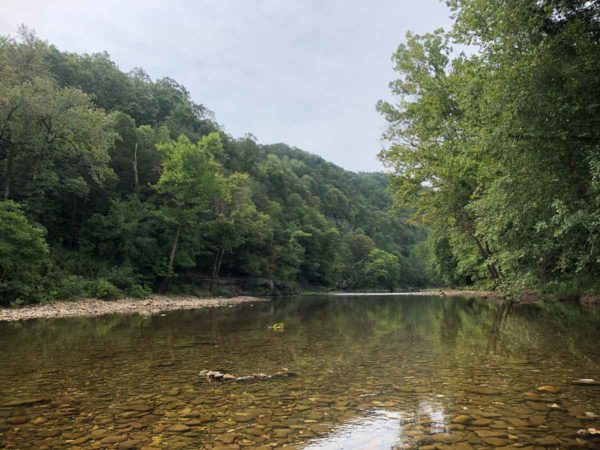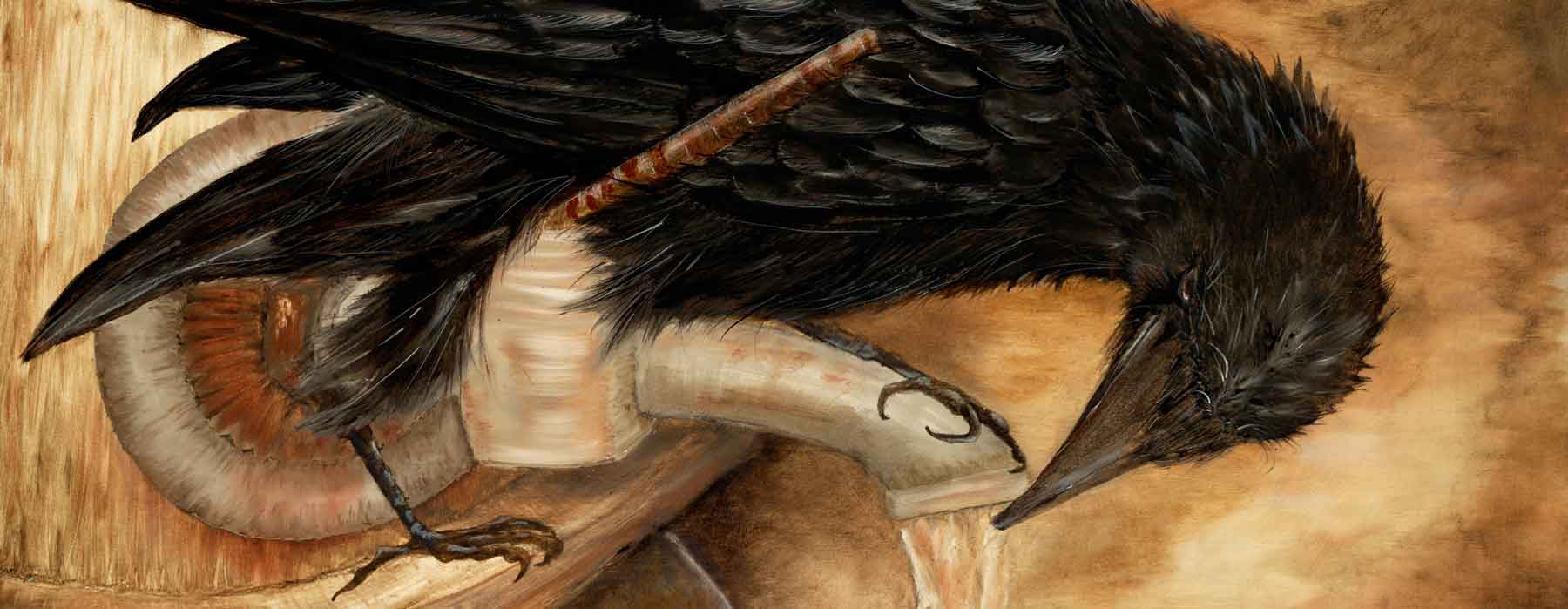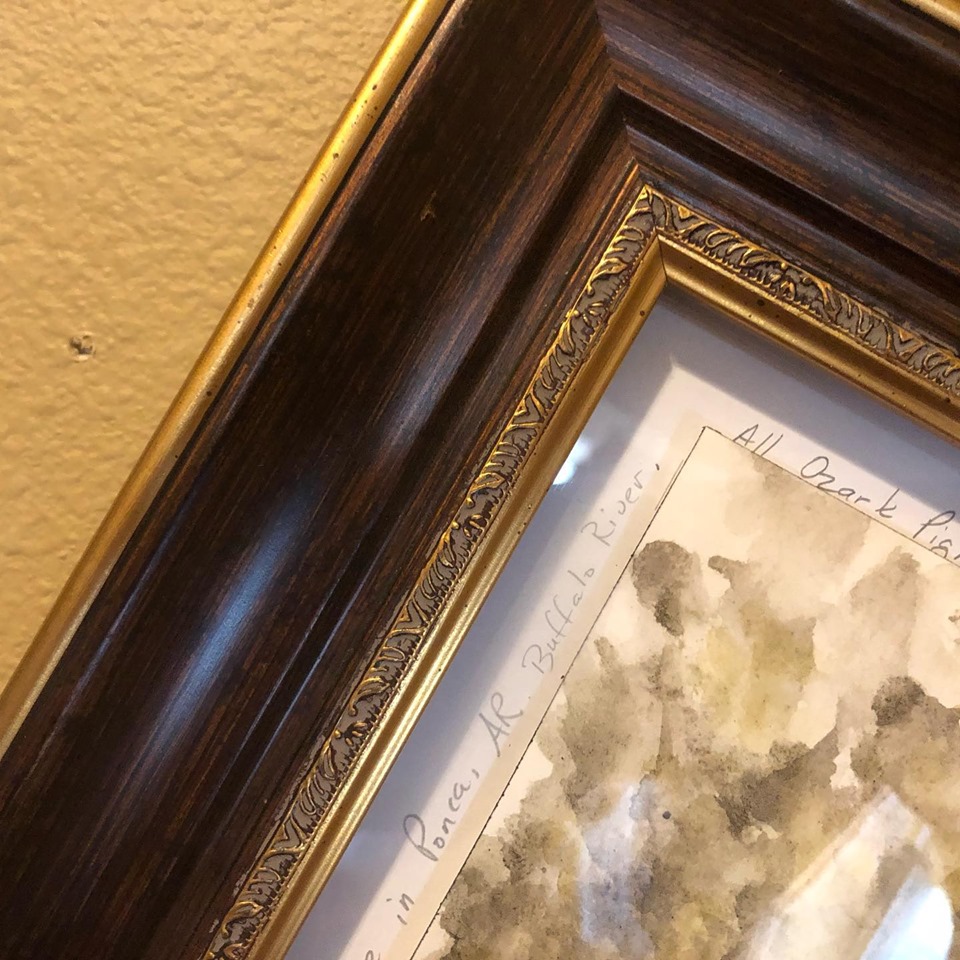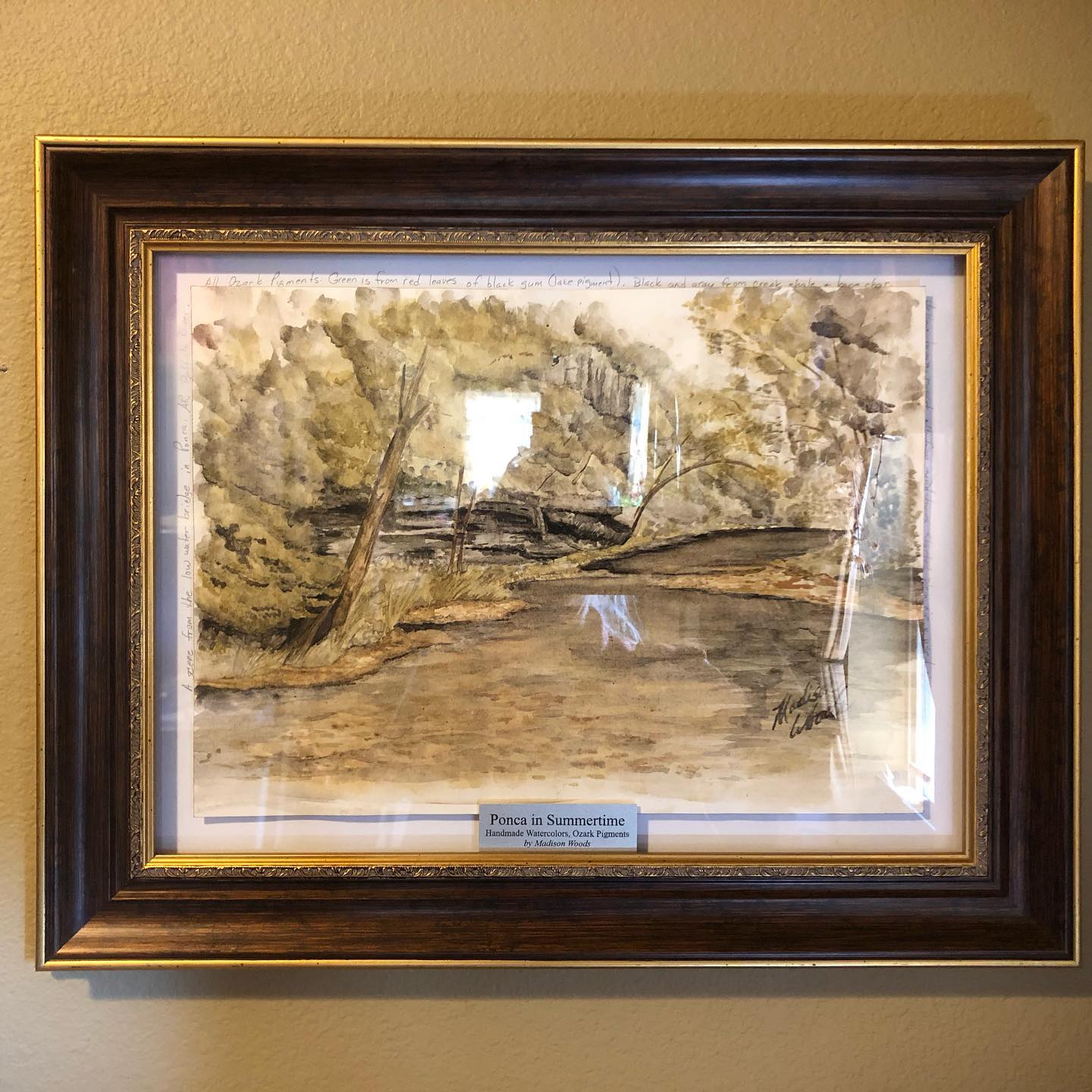I’m a little late getting the process post for this one written. Ponca in Summertime started out plein air. I went out there one morning in mid-August with my Ozark pigments, easel and a chair with the plan to just paint what I saw. That’s a lot harder to do than it looks! My rendering focused in on a small section of the river where the bluffs come right down to the water and there’s an arching tree hanging over. This tree, or one just like it, has graced the reflective surface of the water in that spot since I’ve lived here.
But I am not an experienced landscape artist and so the struggle was real. I’m still finding my feet as an painter in general. Since I started this watercolor adventure in the summer of 2018, I’ve focused mostly on birds of prey, with a few random birds and critters in between. I liked painting this Ponca scene and will try another one soon.
Before morning had ended, the heat had arrived and I packed up my gear. And before that, I took a pic with my phone so I could finish the scene later. While sitting there beside the water, I used water from the Buffalo River itself to wet my paints.
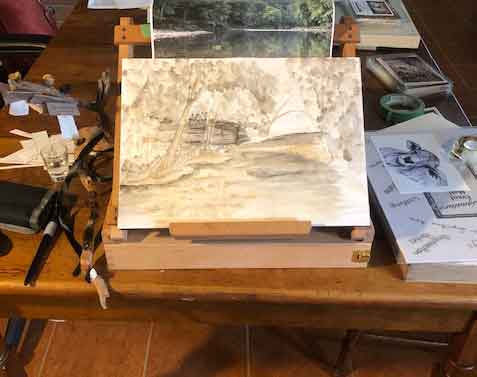
The Ozark Pigments
Ordinarily I use only light-fast earth pigments for my paintings made from rocks, clay, or other resources I find here at Wild Ozark. This painting still uses all Ozark pigments, but this time I used a green lake made from the red leaves of black gum. The other colors aside from green came from charred bone, creek shale, and sandstones of black, brown, red, and yellow hues.
Ordinarily I don’t use colors I’ve made from plants because most are not permanent. For now, and most likely for many years, this green will stay green if kept beneath good UV protection glazing. Right now it’s framed with Conservation Clear by TruVu and offers 99% protection from UV rays.
Because the green pigment is not lightfast it will eventually turn more brown than green. The scene will evolve to reflect the changing of the season and will hopefully retain its beauty, or maybe even grow more beautiful in the same way nature does in the shift from summer to autumn.
Framing
Usually I add some notes on the back side of a framed painting. This time I decided to do it where it can be seen from the front. I wrote around the outside edges of the painting on the backer, and floated the painting inside the frame. What do you think? Should I do it on the front like this, or continue with notes on the back?
Making the green for Ponca in Summertime
You can read about the process of making this green at my Paleo Paints website. It’s a ‘lake’ pigment, which means it was made by precipitating the dye portion of the plant with a chemical reaction. I used alum and calcium carbonate.
Where to see this painting
Until November 30, Ponca in Summertime is hanging at the 1894 Gallery in Texarkana, TX for the Our Heritage Through the Arts show. I have two other paintings in the exhibit for the same show. If it doesn’t sell during the show, I’ll have it with me at the Dec. 7 Little Craft Show in Bentonville, AR.
Where is Ponca?
Ponca is in Newton county in northwest Arkansas. It’s one of the popular put-in points for floaters on the Buffalo River. Want to see this scene in real life? Head on over through Boxley Valley and turn on Hwy 43 to go toward Ponca. You’ll need to turn just before Hwy 74 E to reach the low-water bridge. If you pass through Kingston on your way there and the gallery on the square is open, stop in. I might be there, especially if it’s a Sunday 🙂
My rendering of it is not exactly like the photo, though, so I hope you can recognize what I saw.
